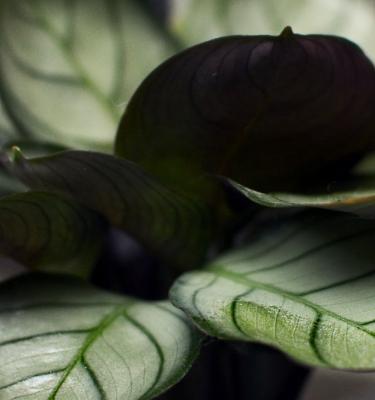

How to grow & care for ctenanthe
Ctenanthe species (pronounced te-NANTH-ee) are often mistaken for their cousins the calatheas and confusingly they are both often commonly called Prayer Plants. The most common ctenanthe - Ctenanthe setosa 'Grey Star’- has striking leaves that are oval shaped with silver-green tops and purple undersides. But there are other varieties of ctenanthe with different leaf colours and patterns.
Like calatheas, ctenanthe (also sometimes called Never Never Plants) leaves also move up and down throughout the day and night.
Ctenanthe can be tricky to grow because they like a bright indirect spot and a high humidity. Too much sun will burn their leaves and not enough humidity will cause them to dry and become crispy.
Top 5 steps to growing ctenanthe
- Ctenanthe prefer a spot with medium to bright indirect light - direct sun can burn their leaves.
- Use a premium, like Scotts Osmocote Premium Potting Mix for Indoor Plants to give your plant the best start possible
- Ctenanthe like a humid environment, so position them in a naturally humid spot like a bathroom or kitchen, sit the pot on a saucer filled with pebbles and water or mist their leaves regularly.
- Fertilise ctenanthe with an indoor plant fertiliser like Scotts Osmocote Pour+Feed for Indoor Plants once a month during spring, summer and autumn, to encourage strong healthy growth.
- Remove any dead or damaged leaves at the base to promote new growth
Shopping List
- A Ctenanthe plant
- If growing in a pot
- If growing in the ground
- A potting mix scoop or garden trowel
- Defender Pyrethrum Insect Spray
Growing in a pot
Choose a pot for your ctenanthe that’s roughly 2 times the size of the original nursery pot - make sure it has drainage holes or use a black plastic pot that sits snuggly inside a cover-pot or cache pot (pot with no holes).
Half fill your pot with Scotts Osmocote Premium Potting Mix for Indoor Plants and gently remove the ctenanthe from the nursery pot and position it into the potting mix, backfill around root ball with more potting mix so that the potting mix is level with, or slightly below, the top of the pot.
Water your new ctenanthe in well and tip out any excess water from the base of the coverpot or saucer (if using). Ctenanthe can tolerate drying out between waterings during winter, make sure the top 1-2cm of soil is dry before watering again. Although ctenanthe like a moist potting mix they don’t like wet feet, so don’t let water pool in the base of coverpots or in saucers as they’ll quickly rot if their potting mix remains soggy or waterlogged.
Growing in the garden
Ctenanthe can be grown outside in warm, frost free climates. Choose a shady spot with rich, moist but free-draining soil - under a tree is ideal. Dig the hole twice as wide as the original nursery pot and the same depth. Mix some Scotts Osmocote Compost Premium Soil Improver through the soil at the bottom of the whole.
Remove your ctenanthe from its pot and position it into the middle of the hole, backfill around the root ball with soil and water your new plant in well.
Mulch around you in ground ctenanthe to retain moisture and suppress weeds. They’ll need regular watering particularly during warmer or dry weather.
Fertilising & Care
Fertilise ctenanthe fortnightly in spring, summer and autumn with an indoor plant fertiliser to encourage new growth. Use Scotts Osmocote Pour+Feed for Indoor Plants - this is a simple to use ‘measure and pour’ feed which contains the right balance of nutrients. If you’d prefer a longer term fertilising product with less applications, apply Scotts Osmocote Controlled Release Fertiliser for Indoor Plants in early spring and again in early autumn - this product feeds for up to 6 months.
Fertilise in ground planted ctenanthe with Scotts Osmocote Controlled Release Fertiliser: All Purpose in spring and autumn.
In the warmer months of spring and summer ctenanthe will appreciate a more regular watering and a higher humidity. To increase the humidity around ctenanthe, group them with other plants to create a microclimate or mist them with a spray bottle regularly. You can also sit their pot on a saucer filled with pebbles and water - as the water evaporates it will humidify the air. Ctenanthe don’t like being hit with drying air, so keep them away from air-conditioning or heating vents.
Remove any dead or damaged leaves to promote new growth. If the tips of the leaves go brown it could be too much sun or not enough humidity, try decreasing the amount of direct sun the plant gets and increasing the humidity around it.
Pests & Diseases
Look out for distorted new growth and obvious signs of pests on the undersides of leaves. Scale and mealybugs can from time to time become a problem on ctenanthe - use Defender Pyrethrum Insect Spray to control them if needed.



